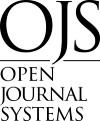EXPERIENCIA PROFESIONAL, CONOCIMENTO Y FORMACIÓN ACADÉMICA COMO FACTORES DEL CAPITAL HUMANO, UN MODELO PARA GENERAR DESEMPEÑO FINANCIERO.
DOI:
https://doi.org/10.29105/vtga3.3-1123Keywords:
Human capital, professional experience, knowledge, academic training, financial performanceAbstract
The study of human capital in companies was analyzed through documental and qualitative research of different models to design the optimum that contemplates the factors that should be considered as part of the administration of the same. Human capital is one of the key elements in being part of all functional areas in companies that give value and generate a higher financial return. If human capital is adequately managed and factors such as the promotion of professional experience understood as the permanence of the workers and their promotions within the company, the updating of the knowledge as support to the workers in training, as well as Education in academic training by recruiting staff with higher levels of 723 education, will allow analyzing the correlation between them to generate financial performance and can become a competitive advantage for companies.
Downloads
References
Acemoglu, D., y Autor, D. (2011). Skills, tasks and technologies: Implications for employment and earnings. Handbook of labor economics, 4, 1043-1171. DOI: https://doi.org/10.1016/S0169-7218(11)02410-5
Acemoglu, D., y Autor, D. (2012). What Does Human Capital Do? A Review of Goldin and Katz's The Race between Education and Technology. DOI: https://doi.org/10.3386/w17820
Journal Of Economic Literature, 50(2), 426-463. doi:10.1257/jel.50.2.426 DOI: https://doi.org/10.1257/jel.50.2.426
Barney, Jay B. (1991). Firm resources and sustained competitive advantage. DOI: https://doi.org/10.1177/014920639101700108
Journal of Management, Vol.17, Pp. 99–120.
Barnir, A. (2014). Gender Differentials In Antecedents Of Habitual Entrepreneurship: Impetus Factors And Human Capital. Journal Of Developmental Entrepreneurship, 19(1), -1. doi:10.1142/S1084946714500010. DOI: https://doi.org/10.1142/S1084946714500010
Becker Gary S. (2013) Human Capital. A Theoretical and Empirical Analysis, with Special Reference to Education, Third Edition. The University of Chicago Press, Ltd., London.
Chinniah, Y., & Burlet-Vienney, D. (2013). Study on lockout procedures for the safety of workers intervening on equipment in the municipal sector in Quebec. International journal of occupational safety and ergonomics, 19(4), 495-511. DOI: https://doi.org/10.1080/10803548.2013.11077007
Cubbin, J., & Geroski, P. (1987). The convergence of profits in the long run: inter-firm and inter-industry comparisons. The Journal of Industrial Economics, 427-442. DOI: https://doi.org/10.2307/2098581
De Pater, I. E., Van Vianen, A. E., Bechtoldt, M. N., & KLEHE, U. C. (2009). Employees' Challenging Job Experiences And Supervisors' Evaluations Of Promo Ability. personnel psychology, 62(2), 297-325. DOI: https://doi.org/10.1111/j.1744-6570.2009.01139.x
Draca, M., Machin, S., & Van Reenen, J. (2011). Minimum wages and firm profitability. American economic journal: applied economics, 3(1), 129-151. DOI: https://doi.org/10.1257/app.3.1.129
Faga, H. A. (2006). Cómo profundizar en el análisis de sus costos para tomar mejores de... Ediciones Granica SA. Pag. 12.
Georgiadis, A., y Pitelis, C. N. (2012). Human resources and SME performance in services: empirical evidence from the UK. The International Journal of Human Resource Management, 23(4), 808-825. DOI: https://doi.org/10.1080/09585192.2011.561236
Grant, R.M. TOWARD A KNOWLEDGE-BASED THEORY OF THE FIRM Strategic Management Journal (1986-1998); Winter 1996; 17, Winter Special Issue; ABI/INFORM Global pg. 109 DOI: https://doi.org/10.1002/smj.4250171110
Jacobides Michael, G., Winter Sidney, G., & Kassberger Stefan, M. (2007). The Dynamics of Wealth, Profit and Sustainable Advantage. Working Paper, London Business School and Advanced Institute for Management Research.
James Santhanam, F. R. (2011). An impact study of intellectual capital performance on productivity, profitability and market valuation of knowledge industries in India. Proceedings of the Northeast Business & Economics Association.
Mehra, A., Langer, N., Bapna, R., & Gopal, R. D. (2014). Estimating Returns to Training in the Knowledge Economy: A Firm Level Analysis of Small and Medium Enterprises. Mis Quarterly, 38(3). DOI: https://doi.org/10.25300/MISQ/2014/38.3.06
Newbert, S. L. (2007). Empirical research on the resource‐based view of the firm: an assessment and suggestions for future research. Strategic management journal, 28(2), 121-146. DOI: https://doi.org/10.1002/smj.573
Penrose, E. T. (1962). Teoría del crecimiento de la empresa. Aguilar.
Peteraf, M. A. (1993). The cornerstones of competitive advantage: a resource‐based view. Strategic management journal, 14(3), 179-191. Porter, M. E. (1982, 2000). DOI: https://doi.org/10.1002/smj.4250140303
Porter, M. E. (Enero de 2008). Las cinco fuerzas competitivas que le dan forma a la estrategia. Harvard Business Review .
Porter, M. E., & Millar, V. E. (1985). How information gives you competitive advantage. DOI: https://doi.org/10.1108/eb039075
Porter, M. (1982). E.(1980). Competitive Strategy.
Salgueiro, A. (2001). Indicadores de gestión y cuadro de mando. Ediciones Díaz de Santos.
Sehic, D., Mujkic, A., Jusic, J., & Kovacevic, J. (2014). Impact Of Intellectual Capital On Profitability Of Banks In Bosnia And Herzegovina. Conference Proceedings: International Conference of the Faculty of Economics Sarajevo (ICES), 100-110.
Tamasauskiene, Z., & Poteliene, S. (2013). Evaluation of Return to Investment in Human Capital in Lithuania in the Context of Other Countries. DOI: https://doi.org/10.5755/j01.ee.24.3.2957
Engineering Economics, 24(3), 198-206.
Tamošiūnienė, R., & Survilaitė, S. (2016). Assessment of Intellectual Capital in Joint-Stock Companies. Verslas: teorija ir praktika, 17(1), 56-64. DOI: https://doi.org/10.3846/btp.2016.686
Wernerfelt, B. (1984). A resource‐based view of the firm. Strategic management journal, 5(2), 171-180. DOI: https://doi.org/10.1002/smj.4250050207
Downloads
Published
How to Cite
Issue
Section
License

This work is licensed under a Creative Commons Attribution 4.0 International License.
a). Authors keep copyright and give the journal the right of the first publication of the work under a Creative Commons attribution license. This license allows others to share the work as long as original authorship and initial publication in this journal is acknowledged.
b). Authors may make other independent and additional contractual agreements for the non-exclusive distribution of the version of the article published in this journal (e.g., include it in an institutional repository or publish it in a book) as long as they clearly indicate that the work was published for the first time in this journal.







